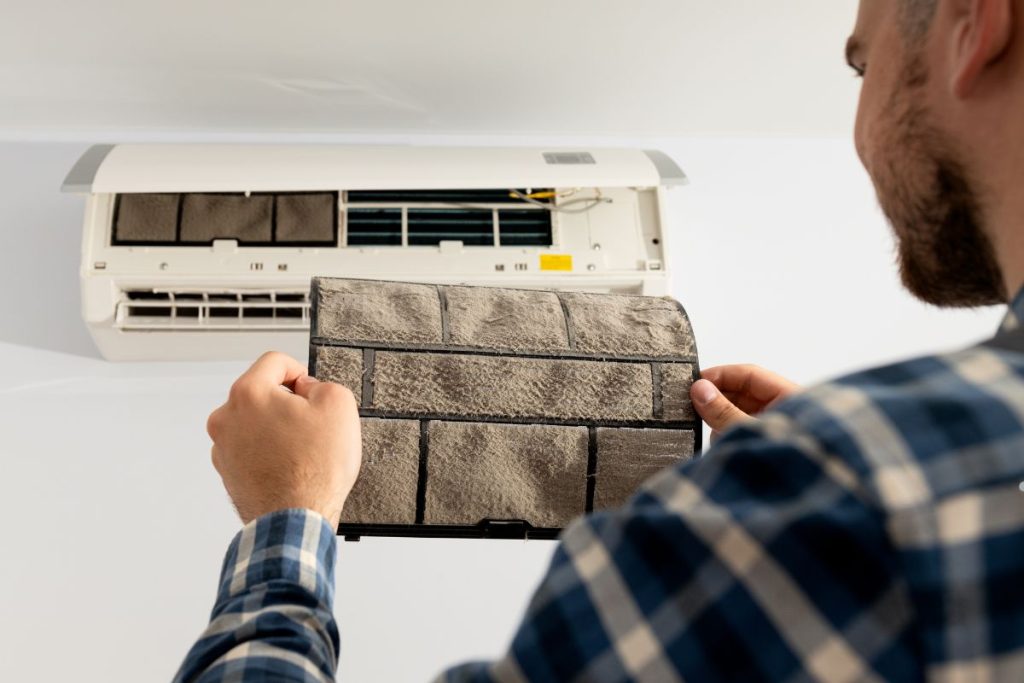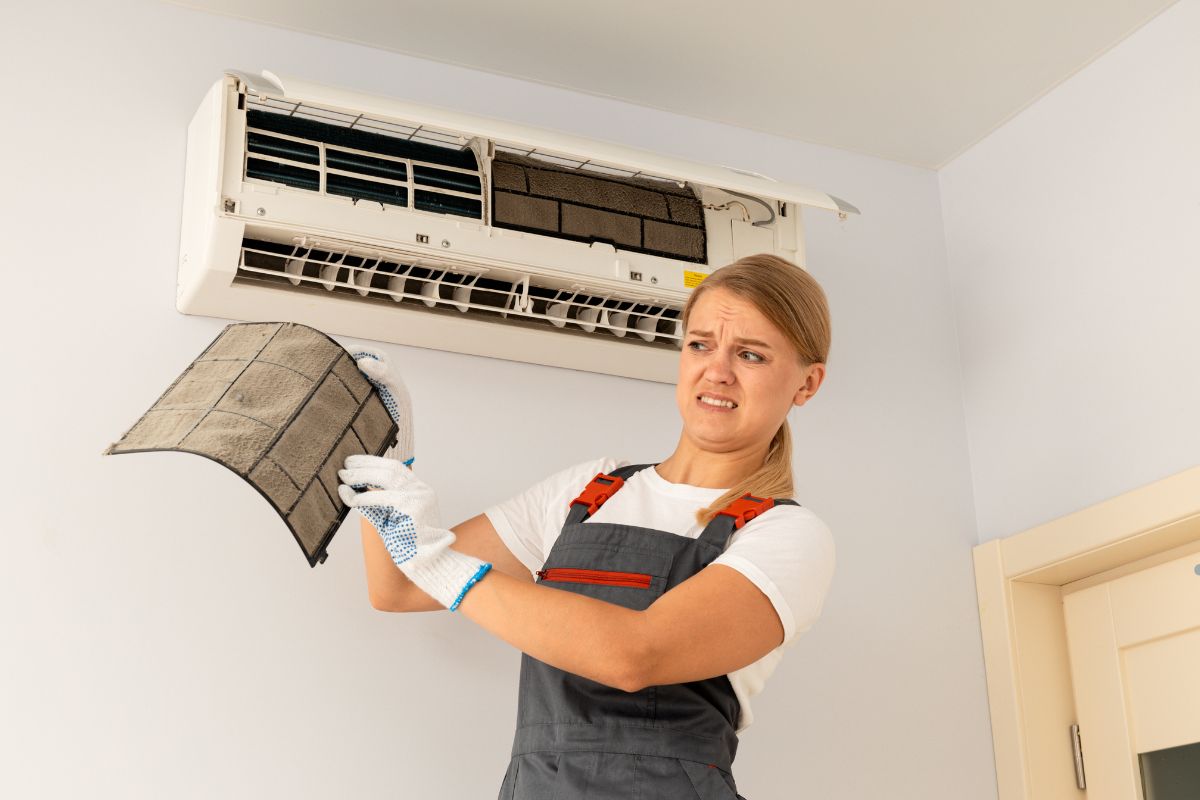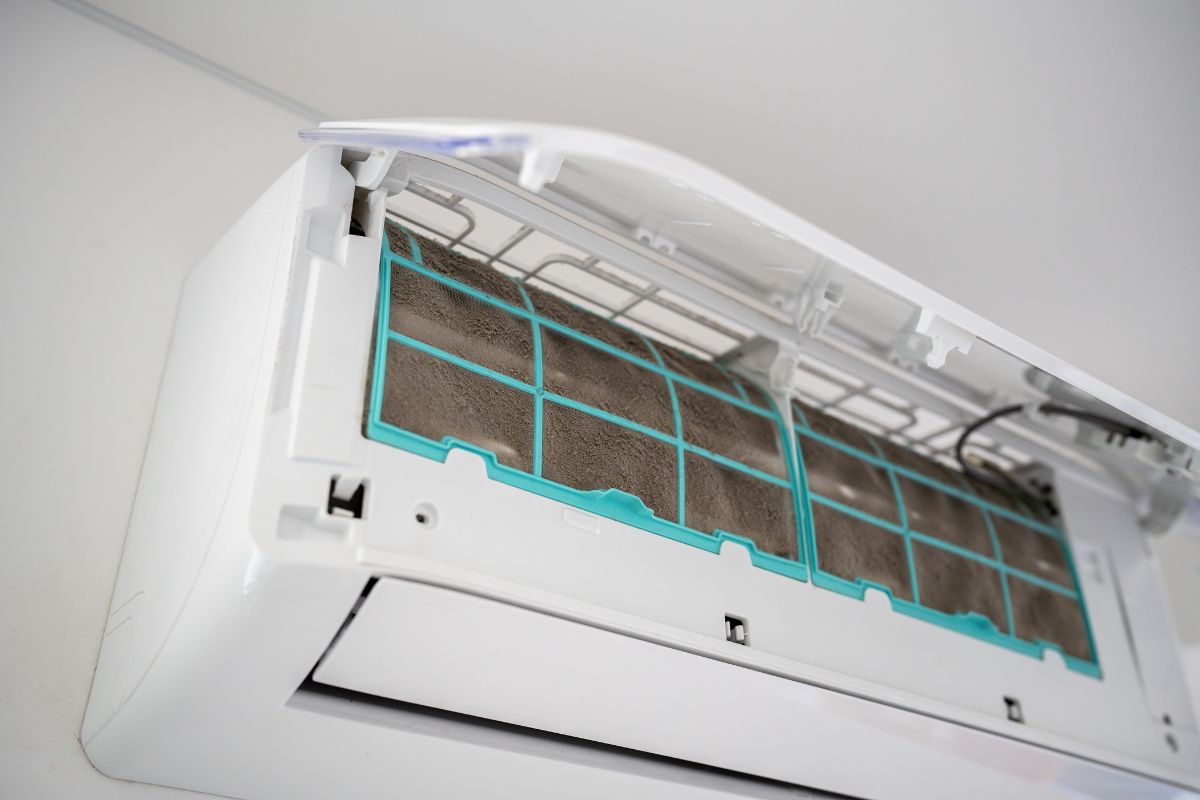
Mold in your air conditioner isn’t just unpleasant; it can be a serious health hazard and reduce the efficiency of your cooling system. The good news is that you can often clean mold from your AC unit yourself, using readily available supplies and following a careful cleaning process. This guide will walk you through identifying, safely removing, and preventing mold in your air conditioner.
Introduction: Mold in Your AC – A Serious Problem
Mold thrives in dark, damp environments, and unfortunately, your air conditioner can be the perfect breeding ground. When mold grows inside your AC unit, it releases spores into the air that you breathe. This can lead to a range of health problems, including:
- Allergies (sneezing, coughing, itchy eyes)
- Asthma flare-ups
- Respiratory infections
- Skin irritation
Beyond the health risks, mold also reduces your AC’s efficiency. Mold buildup on the coils and other components can restrict airflow, forcing your unit to work harder and use more energy. This results in higher energy bills and a shorter lifespan for your AC system. Ignoring mold growth can lead to costly repairs or even premature replacement of your unit.
Identifying Mold in Your Air Conditioner

Before you start cleaning, it’s crucial to confirm that you’re dealing with mold and not just dust or dirt. Here are some telltale signs:
- Visual Inspection: Look for dark spots (black, green, or brown) on the AC coils, fins, drain pan, and vents. Mold often appears fuzzy or slimy.
- Musty Odor: A persistent musty or earthy smell coming from your AC unit is a strong indicator of mold growth.
- Allergy Symptoms: If you notice an increase in allergy symptoms (sneezing, coughing, itchy eyes, runny nose) when the AC is running, mold could be the culprit.
If you suspect mold but are unsure, it’s best to err on the side of caution and investigate further. Use a flashlight to inspect hard-to-reach areas. If the mold growth seems extensive, it’s time to call a professional.Our service provides expert air conditioner mold removal, ensuring a thorough and safe cleaning process.
Safety First: Preparing to Clean Mold from Your AC
Cleaning mold can be hazardous, so it’s essential to take the necessary precautions to protect yourself. Here’s what you’ll need:
- Personal Protective Equipment (PPE):
- Gloves: Wear rubber or nitrile gloves to protect your skin.
- Mask: Use an N-95 respirator mask to prevent inhaling mold spores.
- Eye Protection: Wear safety glasses or goggles to shield your eyes.
- Cleaning Supplies:
- Soft brush or coil brush
- Spray bottle
- Cleaning solution (see Section 5 for options)
- Clean cloths or rags
- Vacuum with HEPA filter (optional)
Before you begin, turn off the AC unit at the circuit breaker to prevent electrical shock.Additionally, wear Safety Precautions service such as gloves and a mask to avoid direct exposure to mold spores.
Step-by-Step Guide: Cleaning Mold from Your AC Unit

The cleaning process service varies slightly depending on the type of AC unit you have. Here’s a breakdown for window units and central AC systems:
Cleaning Window AC Units:
- Unplug the Unit: Disconnect the AC unit from the power outlet.
- Remove the Front Panel: Unscrew or unclip the front panel to access the internal components.
- Clean the Coils and Fins: Use a soft brush or coil brush to gently remove loose debris from the coils and fins.
- Apply Cleaning Solution: Spray the coils and fins with your chosen cleaning solution (see Section 5). Let it sit for the recommended time (usually 10-15 minutes).
- Wipe Clean: Use a clean cloth or rag to wipe away the cleaning solution and any remaining mold.
- Clean the Drain Pan: Remove the drain pan and clean it with soap and water. Rinse thoroughly.
- Reassemble the Unit: Put the unit back together and plug it in.
Cleaning Central AC Units (Indoor – Evaporator Coil):
- Turn Off Power: Turn off the power to the AC unit at the circuit breaker.
- Access the Evaporator Coil: Locate the access panel on the indoor unit (usually a rectangular panel held in place by screws). Remove the panel.
- Clean the Coil: Use a soft brush or coil brush to remove loose debris from the evaporator coil.
- Apply Cleaning Solution: Spray the coil with your chosen cleaning solution. Let it sit for the recommended time.
- Rinse (If Necessary): Some cleaning solutions require rinsing with water. Follow the manufacturer’s instructions.
- Clean the Drain Pan: Clean the drain pan with soap and water and pour a cup of bleach water down the drain line to prevent clogs.
- Reassemble the Unit: Replace the access panel and turn the power back on.
Is that musty smell in your home making you uncomfortable? Don’t let mold compromise your health and comfort. Call us today for a comprehensive AC inspection and mold remediation!
Cleaning Central AC Units (Outdoor – Condenser Coil):
- Turn Off Power: Turn off the power to the AC unit at the circuit breaker.
- Clean the Fins: Use a garden hose to gently spray the condenser fins from the inside out. Avoid using high pressure, which can damage the fins.
- Remove Debris: Remove any leaves, twigs, or other debris that may be blocking airflow.
Choosing the Right Cleaning Solution
Several cleaning solutions can effectively remove mold from your AC unit. Here are a few options:
- DIY Vinegar Solution: Mix equal parts white vinegar and water in a spray bottle. Vinegar is a natural disinfectant and can kill many types of mold.
- DIY Bleach Solution: Mix one part bleach with ten parts water in a spray bottle. Use caution with bleach, as it can damage some surfaces and release harmful fumes. Always wear gloves and eye protection when using bleach.
- Commercial Mold Cleaners: Several commercial mold cleaners are specifically designed for AC units. Follow the manufacturer’s instructions carefully.
When choosing a cleaning solution, consider the severity of the mold growth and the materials you’re cleaning. Always test the solution on a small, inconspicuous area first to ensure it doesn’t damage the surface. Similarly, be mindful of the mold application method to ensure the cleaning process is both safe and effective.
Preventing Mold Growth in the Future
Once you’ve cleaned the mold from your AC unit, it’s essential to take steps to prevent it from returning. Here are some tips:
- Regular Cleaning and Maintenance: Clean your AC unit regularly, at least once a year, to prevent mold growth.
- Control Humidity: High humidity promotes mold growth. Use a dehumidifier to keep the humidity level in your home below 50%.
- Proper AC Usage: Run your AC regularly to keep the unit dry and prevent mold from forming.
- Replace Air Filters Regularly: Change your air filters every 1-3 months to prevent dust and debris from accumulating in the AC unit.
- Professional AC Maintenance: Schedule regular professional AC maintenance to ensure your unit is running efficiently and free of mold.
Worried about tackling the complexities of cleaning your central AC unit? Call us now for expert assistance! We’ll ensure your AC is mold-free and running efficiently.
When to Call a Professional
While you can often clean mold from your AC unit yourself, there are times when professional help is necessary. Consider calling a professional if:
- The mold growth is extensive or difficult to reach.
- You have health concerns related to mold exposure.
- You’ve tried cleaning the mold yourself, but it keeps coming back.
- You’re not comfortable working with cleaning solutions or electrical components.
A professional AC cleaning and mold remediation service can safely and effectively remove mold from your AC unit and prevent it from returning.
Breathe Easier with a Clean AC
Cleaning mold from your air conditioner is crucial for your health and the efficiency of your cooling system. By following these steps and taking preventive measures, you can enjoy clean, healthy air and a comfortable home. If you need professional help, feel free to contact us
